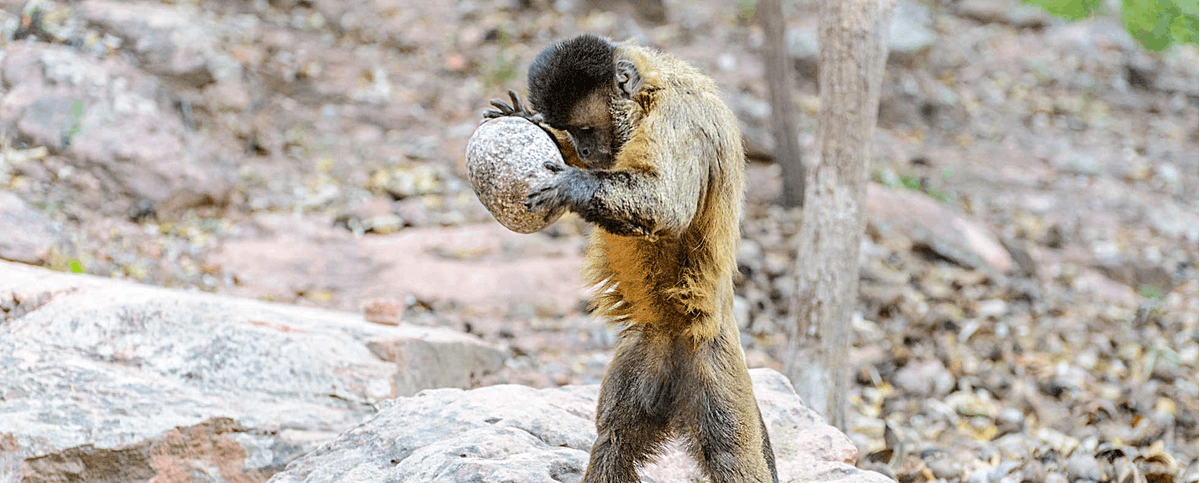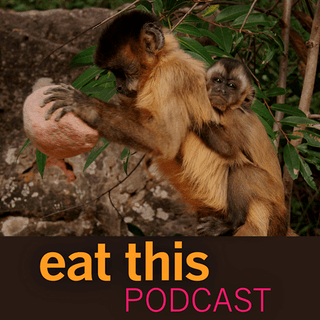
Podcast: Play in new window | Download (Duration: 31:14 — 25.2MB)
Subscribe: Google Podcasts | Spotify | Android | RSS | More
 When chimpanzees were first seen stripping the leaves off slender branches and inserting them into termite nests to fish for the insects, people marvelled. Our nearest relatives, using tools to get nutritious food. Imagine, then, the surprise among primatologists when capuchin monkeys, not nearly as closely related to us, proved equally adept at tool use. Capuchins select stones that can be half as heavy as they are and carry them long distances to use as nutcrackers.
When chimpanzees were first seen stripping the leaves off slender branches and inserting them into termite nests to fish for the insects, people marvelled. Our nearest relatives, using tools to get nutritious food. Imagine, then, the surprise among primatologists when capuchin monkeys, not nearly as closely related to us, proved equally adept at tool use. Capuchins select stones that can be half as heavy as they are and carry them long distances to use as nutcrackers.
Elisabetta Visalberghi is a biologist based in Rome, who published the first scientific observations of tool use in capuchins. That is just a part of her far-reaching investigations into how capuchins, which are omnivorous, go about deciding which foods are worth eating and which are best avoided.
The results may surprise you.
Trailer: The Bearded Capuchin Monkeys of Fazenda Boa Vista from Cognitive Primatology_ISTC on Vimeo.
Notes
- Cover photo of Chuchu and her infant by Elisabetta Visalberghi.
- The video I mentioned in the show is The bearded capuchin monkeys of Fazenda Boa Vista, available from the CNR Primate Center in Rome. There are some other videos on Vimeo.
- The CNR Primate Center website.
- Cashews really are a problem from the people who have to process them. This article is very recent.
- Banner from a photo by Allan Hopkins
- How about making a donation to show your love for the show?

Listened to How capuchin monkeys learn about food And what that might teach us by Jeremy Cherfas from Eat This Podcast
This is so fascinating from an anthropological and even socio-economic perspective.
Syndicated copies to:
Also, I like the idea of just putting food in front of kids and maybe they’ll start eating it if you don’t force the issue. But, that’ll never work with me at this late stage. :-)
Indeed, many of the people I’ve talked to about cashew nuts don’t know the human suffering that goes into them. I learned about it ages ago, when the World Bank interfered with cashew production in Mozambique. That capuchins manage it amazes me.
Good stuff. I did not know about the cashew shells—that seems like something everyone should know!